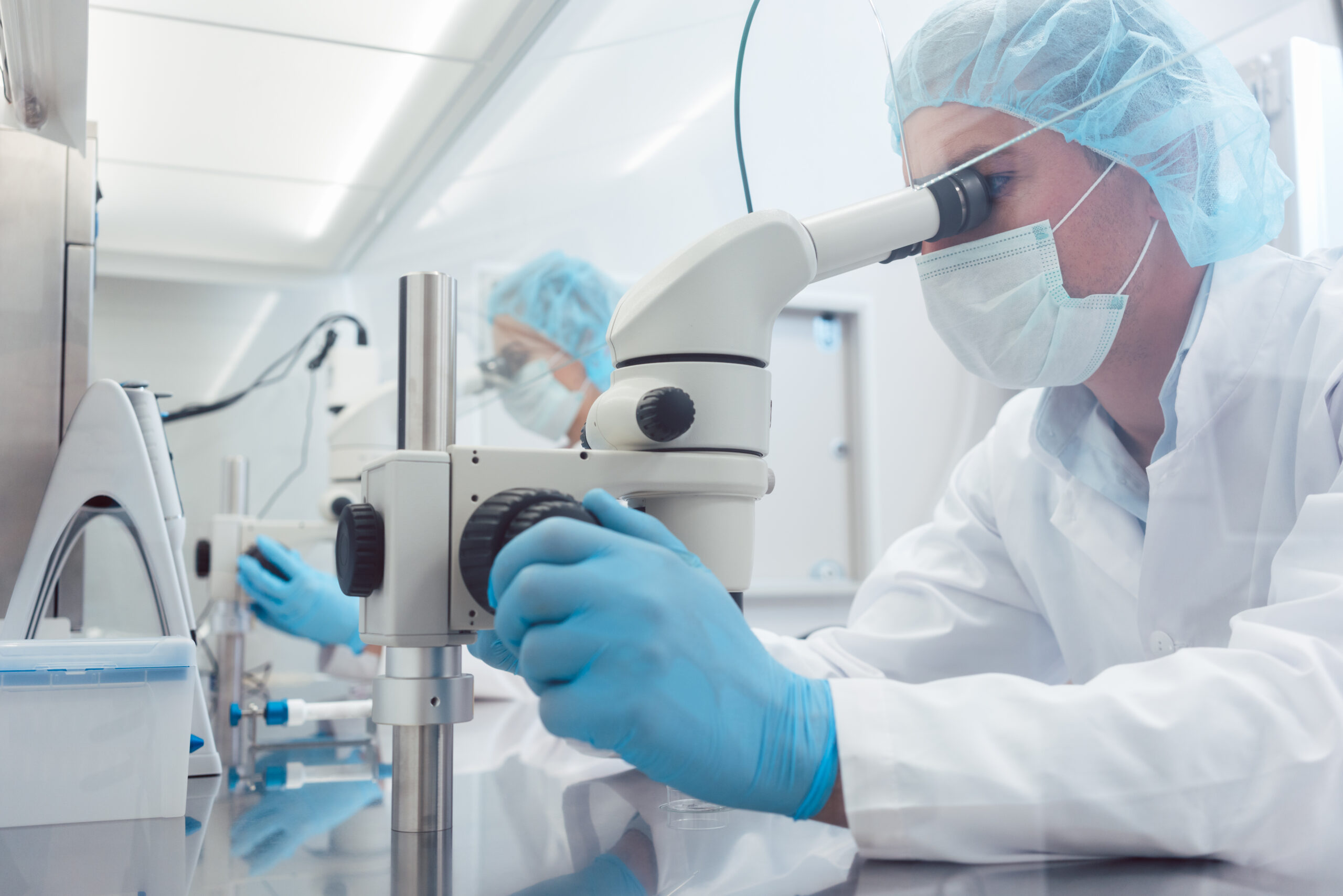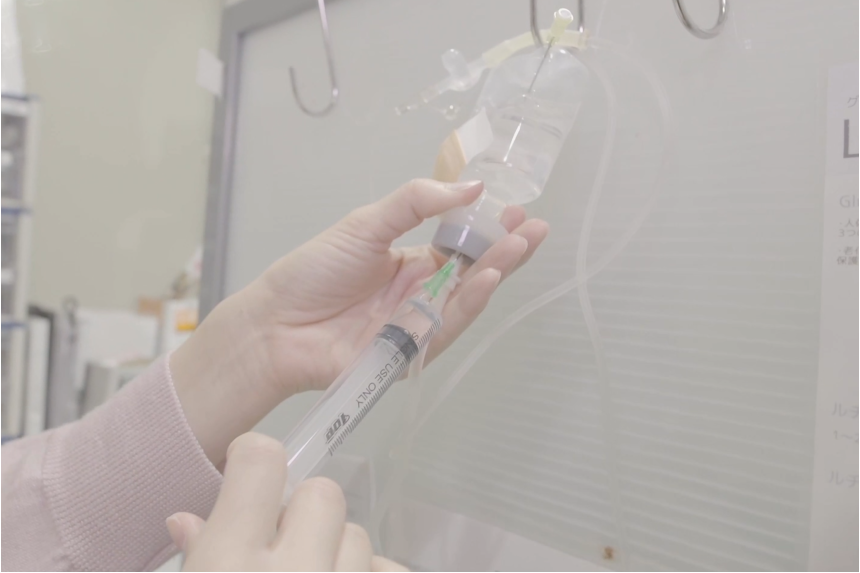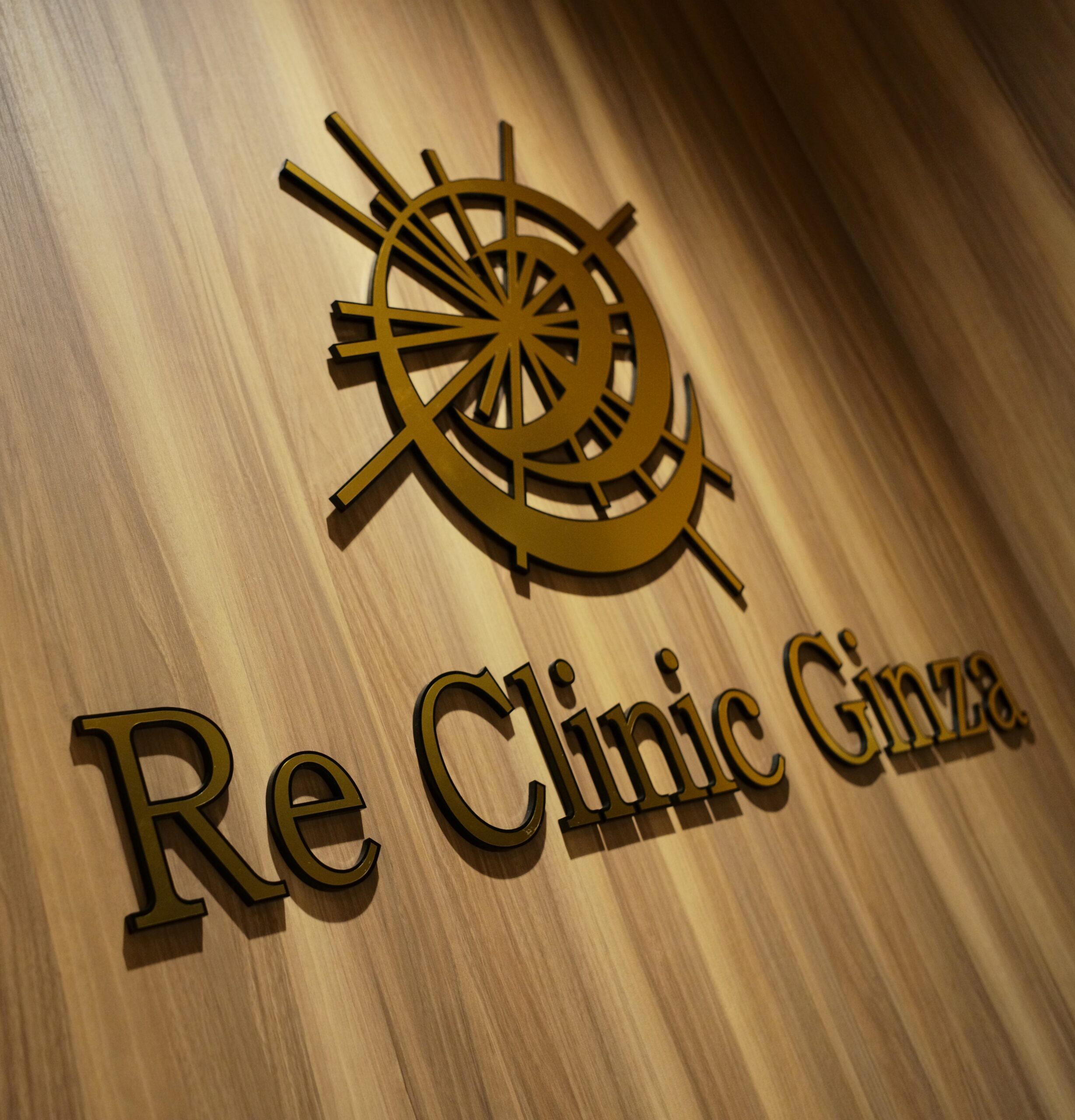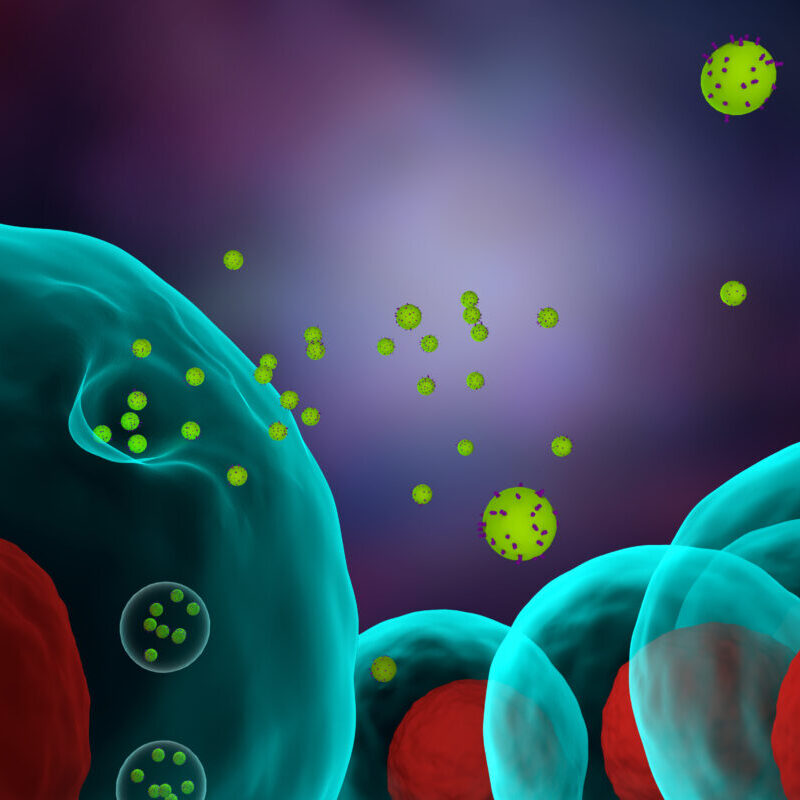What is Arteriosclerosis
Arteriosclerosis, in simple terms, can be described as “aging of blood vessels.” The walls (endothelium) of arteries, which carry blood vigorously from the heart, are normally flexible and elastic. However, as blood vessels age, the walls of these arteries gradually thicken due to factors like cholesterol deposits, causing the vessels to lose their flexibility and become stiff and brittle.
While there may be individual variations, arteriosclerosis progresses with age. Additionally, factors such as obesity, high blood pressure, high blood sugar, and abnormalities in lipid metabolism (a state where triglycerides and low-density lipoprotein (LDL) cholesterol are elevated) can contribute to the advancement of arteriosclerosis.
Furthermore, as the symptoms progress, blood vessels narrow, and complications such as occlusion due to blood clots may occur, increasing the risk of conditions like stroke, myocardial infarction, and angina pectoris.
One of the treatments for arteriosclerosis, which can lead to serious illnesses, offered by our clinic is autologous adipose-derived stem cell therapy. Adipose-derived mesenchymal stem cells replenish and regenerate the damaged endothelial cells of aging arteries.
Patients eligible for treatment.
・Individuals diagnosed with arteriosclerotic lesions.
Those with a history of myocardial infarction, angina pectoris, or stroke.
・Individuals with plaques (IMT 1.1 or higher) in the carotid arteries (common carotid artery, internal carotid artery) as determined by carotid artery ultrasound.
・Those showing coronary artery wall irregularities, calcification, stenosis, or occlusion on coronary artery CT scans.
・Individuals with evidence of cerebral infarcts on head MRI or MRA scans.
・Those with two or more second-degree blood relatives who have arteriosclerotic diseases.
・Those determined to have a high risk of arteriosclerosis based on genetic testing.
Individuals who cannot undergo treatment.
・Individuals under 18 years of age at the time of treatment application.
・Those in a health condition that cannot tolerate fat harvesting.
・Individuals without the capacity for informed consent or for whom consent cannot be obtained from a surrogate decision-maker.
・Those who have not accepted the informed consent document for this treatment, received sufficient explanation, and provided voluntary consent in writing (or whose surrogate decision-maker has not consented in writing).
・Individuals deemed ineligible for treatment by the attending physician based on interviews, examinations, etc.
・Pregnant individuals.
・Those currently undergoing treatment for gynecological conditions.
・Individuals diagnosed with proliferative diabetic retinopathy or age-related macular degeneration.
・Individuals with poorly controlled hypertension or arrhythmia.
・Those exhibiting clinical symptoms of delirium (senility).
・Those with a history of excessive allergic reactions to penicillin.
・Individuals currently undergoing treatment for cerebrovascular disorders such as cerebral infarction or intracranial hemorrhage, or who have been hospitalized for treatment within the past 3 months.
・Individuals currently undergoing treatment for brain tumors or suffering from untreated depression, or whose depression has not improved with treatment.
・Individuals with positive results in infectious disease tests such as hepatitis B, hepatitis C, HIV, syphilis, etc. within the past 12 weeks.
For more details, please inquire by phone or email.
Benefits of Adipose Stem Cell Therapy
1.”Using one’s own adipose-derived stem cells results in fewer side effects and ensures safety.”
You can undergo treatment using your own adipose-derived stem cells.”

2.No Hospitalization or Surgery Required
Adipose stem cell therapy can be performed on an outpatient basis, both for the collection of adipose tissue and the administration of autologous adipose-derived stem cells. It is a low-impact treatment with minimal physical burden.
3.Lifetime Treatment Possibility Through Stem Cell Storage
Cultured stem cells can be preserved for future use, allowing for additional injections as needed.
Treatment Process
Treatment can be done on an outpatient basis, and there is no need for hospitalization.
STEP01
Counseling
Explanation and consent are exchanged in writing.

↓
STEP02
Blood Tests
Pre-tests and suitability assessments are conducted.
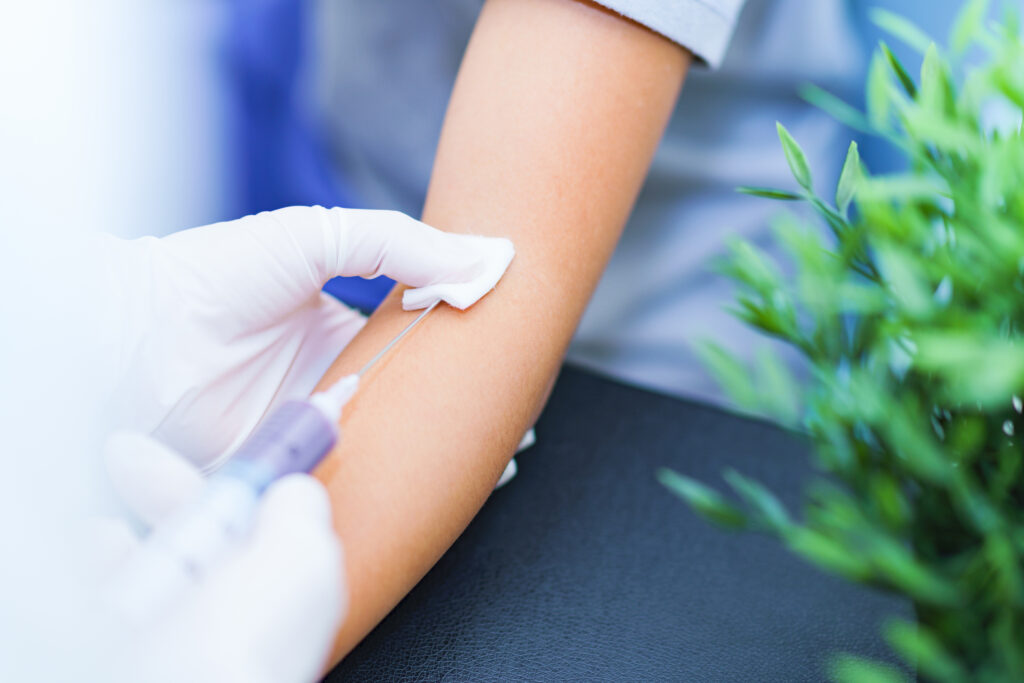
↓
STEP03
Fat Harvesting and Blood Collection
A small amount of fat is harvested from a location, typically the abdomen, where fat can be reliably obtained under local anesthesia.
Blood collection of 100ml is performed for cultivation purposes.
↓
STEP04
Cell Cultivation and Proliferation at the CPC (Cultivation Facility)
Cultivation is carried out for approximately 6-8 weeks, aiming to culture approximately 100 million cells.
There may be individual variations in the rate of cell growth.
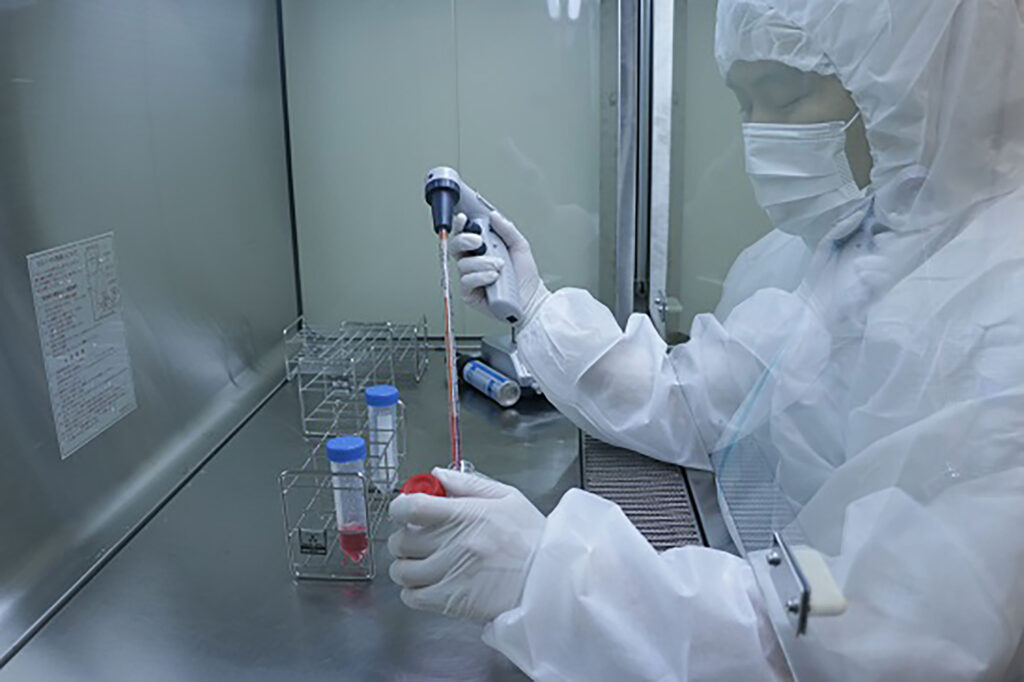
↓
STEP05
Administration via Intravenous Drip (Approximately 30 minutes)
The cultured stem cells are administered via intravenous drip.
↓
STEP06
Follow-up Observation
We aim to observe patients as closely as possible at 1, 3, 6, and 12 months after stem cell administration.
Expected Benefits and Potential Side Effects
Expected Benefits
Adipose-derived mesenchymal stem cells have the ability to differentiate (acquire morphology and function) into nerve, fat, muscle, bone, cartilage, and other internal organ tissues. This capability makes it possible to repair damaged or aging cells.
Furthermore, the paracrine effects of liquid factors such as cytokines and exosomes produced by stem cells can play a role in immune system regulation, angiogenesis, anti-inflammatory effects, antioxidant effects, anti-apoptotic effects, tissue repair, and various therapeutic benefits can be expected.
Potential Side Effects
【During Fat Tissue Harvesting】
・Bleeding from the incision site.
・Infection or pain at the incision site.
・ide effects related to anesthesia medication, allergic reactions (palpitations, hives, difficulty breathing, etc.).
【Side Effects during Administration】
・Fever after stem cell administration
Typically resolves within 24 hours.
・Allergic reactions
Reports of allergic symptoms such as palpitations, hives, and difficulty breathing during treatment.
・Unexpected adverse events
There have been cases in the past where patients who received adipose-derived mesenchymal stem cell therapy died from pulmonary embolism. The causal relationship between stem cell administration and death due to pulmonary embolism is unclear, but pulmonary embolism is the most dangerous complication of intravenous stem cell administration.
In the event that pulmonary embolism occurs during the course of treatment, our clinic will respond as follows.
①If it occurs within the clinic, we will assess the severity based on the guidelines for pulmonary thromboembolism treatment, promptly implement respiratory and circulatory management, and arrange for emergency transportation to affiliated medical institutions, and so on.
②If you experience sudden symptoms such as difficulty breathing, chest pain, or cold sweats outside the clinic, please contact our clinic by phone. We will assess whether an ambulance is required and provide information about affiliated medical institutions, if necessary.
③Regarding unexpected adverse events, we will initially handle them at our clinic. Therefore, if you experience any distressing symptoms accompanied by pain after stem cell administration, please contact our clinic (or the emergency contact line outside of regular business hours). In the unlikely event that we are unable to address the symptoms at our clinic, we will provide guidance to external medical institutions with inpatient facilities.
Important Considerations for This Treatment
On the day of administration, please refrain from intense physical activity, staying up all night, excessive alcohol consumption, and the like.
Sample Storage and Disposal Methods
The blood collected in this treatment will be used exclusively for your own treatment. In cases where treatment results are used as research data, separate confirmation of consent for use will be obtained from you or your surrogate decision-maker. Furthermore, any information that can identify you or your personal details, including the announcement of treatment results, will not be disclosed.
In case of Cultivation Failure
During fat tissue harvesting or adipose-derived mesenchymal stem cell cultivation, there is an extremely rare chance of contamination, such as bacteria or fungi. If contamination (referred to as “contamination”) is confirmed, all cultured cells are discarded, and administration cannot proceed. In such cases, the material will be disposed of. If you wish to continue treatment, you will need to undergo fat tissue harvesting again at no additional cost.
Review and Notification of This Treatment
In accordance with the Act on the Safety of Regenerative Medicine and other related laws, we have obtained approval for “appropriate” in the review by the Committee on Regenerative Medicine and others before submitting the Regenerative Medicine Provision Plan to the Minister of Health, Labor, and Welfare for treatment using autologous adipose-derived stem cells at our clinic.
If you wish to review the plan, please contact our inquiry desk.
Comparison with Other Treatment Methods
Arteriosclerosis is known to involve various factors. The choice of treatment methods varies depending on the underlying conditions, but generally, lifestyle modifications (dietary therapy and exercise therapy) are prioritized. If improvement is not observed even with these lifestyle changes, pharmacotherapy and surgical interventions are recommended.
As for dietary therapy, it is recommended to strive for a well-balanced and regular diet that provides proper nutrition and to avoid excessive alcohol consumption. Exercise therapy involves activities such as walking or swimming for at least 30 minutes, 3 to 4 days a week.
In cases where lifestyle modifications do not lead to symptom improvement, pharmacotherapy options include statins, which have the ability to reduce cholesterol levels, fibrates, which suppress the production of triglycerides in the liver and increase cholesterol excretion, and omega-3 fatty acid preparations, which reduce triglycerides and promote blood thinning.
Pharmacotherapy carries the risk of side effects due to continuous medication. In addition, catheter treatment and bypass surgery may be chosen with the aim of improving narrowed or blocked blood pathways. These surgical treatments are highly invasive methods.
Frequently Asked Questions(FAQs)
Q: Is hospitalization required?
A: While two visits are necessary, one for the collection of the patient’s own tissues that serve as the source of the administered cells and another after cultivation is completed for the actual administration, both procedures can be done as outpatient treatments.
Q: How long does the treatment take?
A: The collection of the patient’s own tissues takes about 1 hour, and the treatment itself via intravenous drip typically takes around 1 to 2 hours to complete. Since we operate on a fully scheduled appointment system, there is no waiting time.
However, please note that the cultivation of adipose stem cells will take approximately 6 to 8 weeks. Therefore, the overall timeframe from the initial consultation to the treatment is approximately 2 to 2.5 months.
Q: How much of my own tissue is needed for the treatment?
A: Approximately 3-5 cubic centimeters of tissue will be collected. Local anesthesia is administered during the collection, so there is very little pain involved.
Q: Is safety ensured?
A: Treatment through regenerative medicine requires the submission of a treatment provision plan to the Ministry of Health, Labor, and Welfare and cannot be provided without acceptance. Our clinic’s application has been accepted, and we offer a treatment method that has undergone strict safety evaluations domestically.
Q: Is it eligible for medical expense deduction?
A: If it is for medical treatment purposes, it may be eligible for medical expense deduction. For detailed procedures and information, please inquire at your nearest tax office.
On the day of administration, please refrain from intense physical activity, staying up all night, excessive alcohol consumption, and the like.
Sample Storage and Disposal Methods
The blood collected in this treatment will be used exclusively for your own treatment. In cases where treatment results are used as research data, separate confirmation of consent for use will be obtained from you or your surrogate decision-maker. Furthermore, any information that can identify you or your personal details, including the announcement of treatment results, will not be disclosed.
In case of Cultivation Failure
During fat tissue harvesting or adipose-derived mesenchymal stem cell cultivation, there is an extremely rare chance of contamination, such as bacteria or fungi. If contamination (referred to as “contamination”) is confirmed, all cultured cells are discarded, and administration cannot proceed. In such cases, the material will be disposed of. If you wish to continue treatment, you will need to undergo fat tissue harvesting again at no additional cost.
Review and Notification of This Treatment
During fat tissue harvesting or adipose-derived mesenchymal stem cell cultivation, there is an extremely rare chance of contamination, such as bacteria or fungi. If contamination (referred to as “contamination”) is confirmed, all cultured cells are discarded, and administration cannot proceed. In such cases, the material will be disposed of. If you wish to continue treatment, you will need to undergo fat tissue harvesting again at no additional cost.
Comparison with Other Treatment Methods
In accordance with the Act on the Safety of Regenerative Medicine and other related laws, we have obtained approval for “appropriate” in the review by the Committee on Regenerative Medicine and others before submitting the Regenerative Medicine Provision Plan to the Minister of Health, Labor, and Welfare for treatment using autologous adipose-derived stem cells at our clinic.
If you wish to review the plan, please contact our inquiry desk.
Comparison with Other Treatment Methods
Arteriosclerosis is known to involve various factors. The choice of treatment methods varies depending on the underlying conditions, but generally, lifestyle modifications (dietary therapy and exercise therapy) are prioritized. If improvement is not observed even with these lifestyle changes, pharmacotherapy and surgical interventions are recommended.
As for dietary therapy, it is recommended to strive for a well-balanced and regular diet that provides proper nutrition and to avoid excessive alcohol consumption. Exercise therapy involves activities such as walking or swimming for at least 30 minutes, 3 to 4 days a week.
In cases where lifestyle modifications do not lead to symptom improvement, pharmacotherapy options include statins, which have the ability to reduce cholesterol levels, fibrates, which suppress the production of triglycerides in the liver and increase cholesterol excretion, and omega-3 fatty acid preparations, which reduce triglycerides and promote blood thinning.
Pharmacotherapy carries the risk of side effects due to continuous medication. In addition, catheter treatment and bypass surgery may be chosen with the aim of improving narrowed or blocked blood pathways. These surgical treatments are highly invasive methods.
Frequently Asked Questions (FAQs)
Q: Is hospitalization required?
A: While two visits are necessary, one for the collection of the patient’s own tissues that serve as the source of the administered cells and another after cultivation is completed for the actual administration, both procedures can be done as outpatient treatments.
Q: How long does the treatment take?
A: The collection of the patient’s own tissues takes about 1 hour, and the treatment itself via intravenous drip typically takes around 1 to 2 hours to complete. Since we operate on a fully scheduled appointment system, there is no waiting time.
However, please note that the cultivation of adipose stem cells will take approximately 6 to 8 weeks. Therefore, the overall timeframe from the initial consultation to the treatment is approximately 2 to 2.5 months.
Q: How much of my own tissue is needed for the treatment?
A: Approximately 3-5 cubic centimeters of tissue will be collected. Local anesthesia is administered during the collection, so there is very little pain involved.
Q: Is safety ensured?
A: Treatment through regenerative medicine requires the submission of a treatment provision plan to the Ministry of Health, Labor, and Welfare and cannot be provided without acceptance. Our clinic’s application has been accepted, and we offer a treatment method that has undergone strict safety evaluations domestically.
Q: Is it eligible for medical expense deduction?
A: If it is for medical treatment purposes, it may be eligible for medical expense deduction. For detailed procedures and information, please inquire at your nearest tax office.

